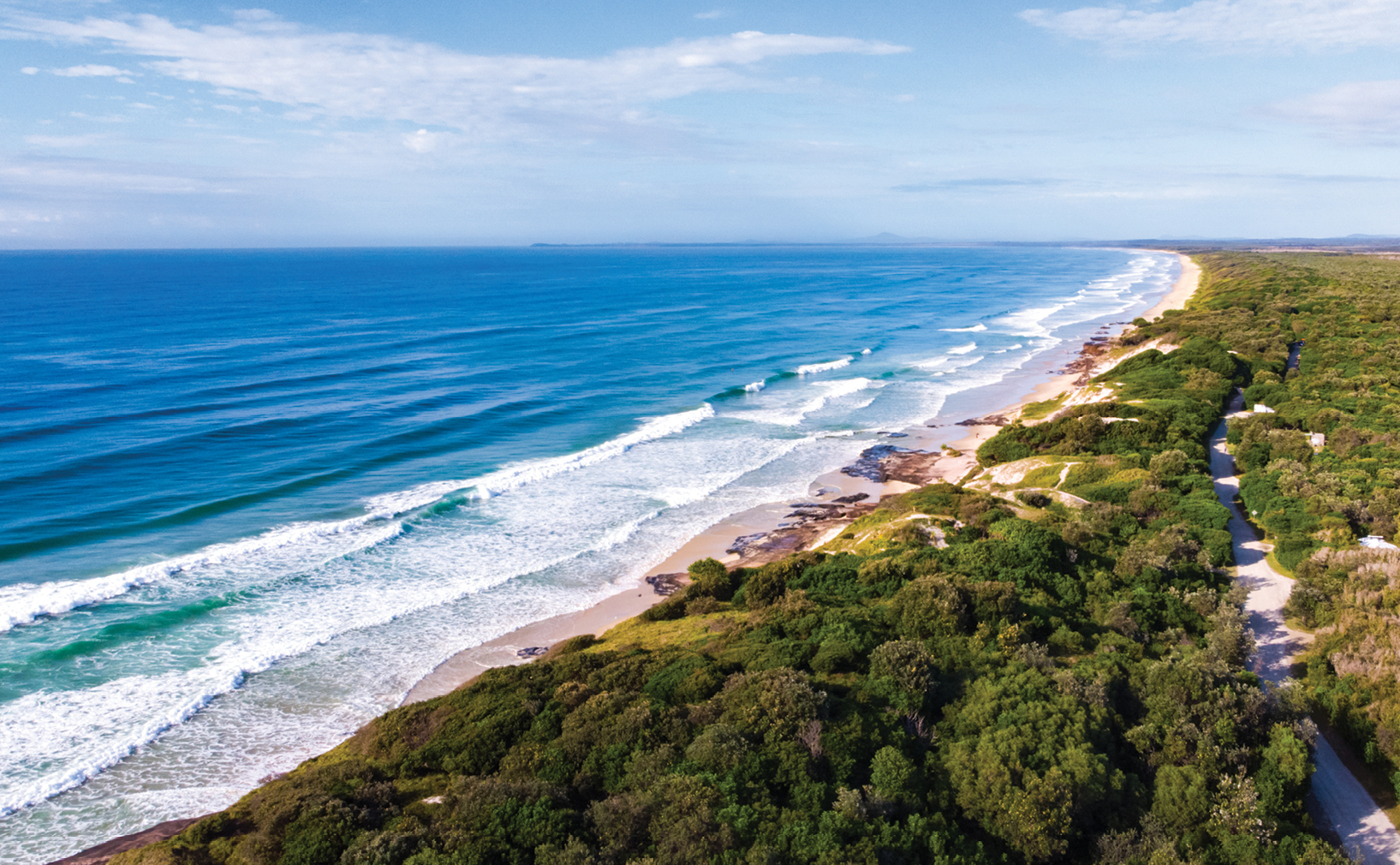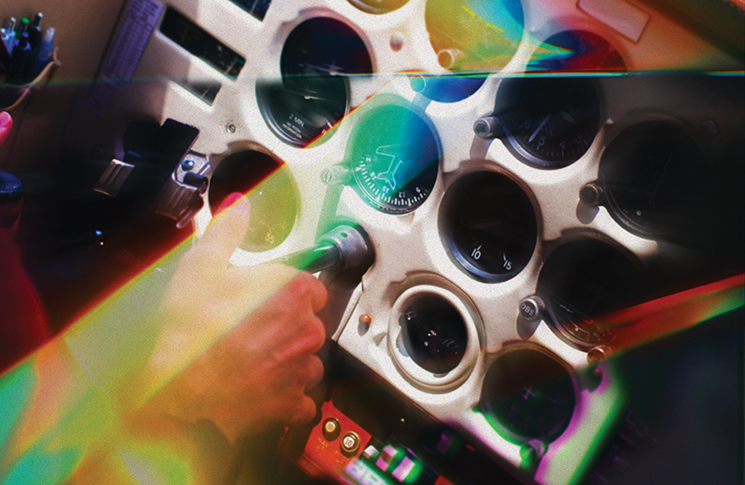Specific programs for weekend and fair-weather pilots to hone their skills are money well spent.
Imagine it’s a clear sunny day – perfect conditions. You’re flying a Cessna 182 off the coast of Byron Bay. You look down and see beachgoers scattered along the pristine sandy shoreline enjoying the warm weather.
You complete your run along the coast, following it back to Ballina airport. Suddenly, there’s a loud sound and you quickly begin to lose power. You don’t know what’s happened but you know you don’t have long to diagnose the problem. In the heat of the moment, would your flight training kick in and you’d know what to do?
For recreational pilots, flying is a much-loved pastime. Some fly every weekend, criss-crossing the countryside, visiting far away destinations, whereas others only fly every so often.
Unlike career pilots, recreational pilots tend to fly only when conditions are good. It is rare for a recreational pilot to venture out when a storm front is approaching. Blue skies are great for joy flying, but perfect conditions don’t adequately prepare pilots for less-than-ideal circumstances that might arise unexpectedly.
To address this potential gap in experience, several aircraft-specific groups hold pilot proficiency programs for their members to identify areas where skills might be lacking and offer refresher sessions on how to respond to adverse events that can arise during flight. These programs can take several forms, but are primarily a way for the aviation community to come together and talk about safety issues pertinent to their aircraft.
The proficiency check component of the pilot proficiency program involves having an instructor sitting in the copilot seat simulate a hazardous event and examine the response of the pilot in command, to determine if they are successful in troubleshooting the problem safely and effectively.
Events that can be simulated include minor incidents such as aerodynamic stalls, precautionary landings and weather deviations, as well as more serious events like system malfunctions, unstable approaches and engine failure at take-off or cruising altitude.
Australian Piper Aircraft Society president David Goode says recreational pilots must make a distinction between being competent and being proficient.
‘The vast majority of our members are competent pilots – they’ve passed their flight examinations and received their licences, so they have been deemed competent to fly,’ he says. ‘But this doesn’t necessarily mean they’re proficient in handling an incident they’ve rarely encountered, if at all.
‘It’s our responsibility to ensure our members are being as safe as possible when flying, and this includes doing our due diligence by making sure they know how to handle tricky situations if and when they happen.’
These sentiments are reinforced by Bruce Baade from the Australian Beechcraft Society.
‘The message we want them to take away is understanding the need to always maintain awareness of their surroundings and how the aircraft is operating – and develop the ability to calmly diagnose a problem and then act decisively,’ he says.
‘There are a lot of cowboys out there thinking they can just wing it when an incident occurs, but that’s a very bad mindset to have.’
When the groups are devising proceedings for their respective programs, they find being aircraft type-specific makes scoping topics much easier.
Baade points to this factor as one of the key reasons for the program’s success with Beechcraft owners.
‘Having a targeted approach is beneficial to members. I think that’s why pilots are so keen to come along to our event,’ he says. ‘They know the information presented will be useful to them and won’t just be a never-ending talkfest. They’ll get something useful out of it.’
Mooney masters
Baade says the weekend is also a great opportunity for pilots from all walks of life to catch up, share stories, network and connect with each other through their love of flying.
‘We can talk about safe flying forever but, at the end of the day, it’s a social event,’ he says. ‘We love having our members under the one roof, from all different parts of the country – some even come over from New Zealand to be involved.
‘Each of us bring different levels of experience to the conversations. It’s a great way for less experienced pilots to get deeper insights from those with a wealth of experience.’
Erik Mol, chief flight instructor for the Australian Mooney Pilots Association, which has been running pilot proficiency programs for close to 30 years, emphasises understanding an aircraft’s efficiency as a key take away for participants.
‘It’s not simply being proficient at flying but knowing how to efficiently operate the aircraft is equally important,’ he says.
‘For instance, in order for a pilot to get out of a tricky situation in flight, they need to know the capabilities of the aircraft, how it handles, which speeds are the best to perform manoeuvres or come in for a smooth landing.
‘Pilots need to know their aircraft inside out, its idiosyncrasies and its strengths and weaknesses, so it can be flown proficiently.’
Mooney aircraft have a reputation for being a difficult aircraft to fly. Mol explains their pilot proficiency program was born out of the regulator’s decision to add additional requirements for Mooney pilots to attain their licence, which wasn’t applied to pilots of comparable aircraft.
‘Mooney pilots didn’t like the idea of having to gain additional accreditation to fly an aircraft they loved so much,’ he says. ‘So, as a compromise, we assured the regulator we would hold regularly scheduled proficiency checks to ensure pilots were able to refresh their knowledge and practise for difficult flying conditions – and CASA was happy with that.’
Like the Piper and Beechcraft group, Mol also praises the social aspect of Mooney events.
‘Our pilots are incredibly proud of their aircraft,’ he says. ‘The program gives them a chance to discuss safety related matters with other members, what they’re doing in terms of maintenance and upkeep, and reiterating best practice to ensure all members are flying as safely as possible.
‘We love seeing so many passionate people in the one room. It’s a great community atmosphere.’

Piper perfectionists
Despite the positive engagement, the groups acknowledge there are always challenges.
‘We find the pilots who attend our program aren’t the ones who really need to be there,’ Baade says. ‘These pilots already conduct their flying safely. It’s the cowboy pilots I mentioned earlier who take unnecessary risks who should really be there. But they often don’t come because they think they’re invincible!
‘It’s a challenge to convince them to attend, but it’s not through lack of trying.
‘Risk-taking is part of human nature. We all take risks every day, whether we realise it or not. Even safe pilots take risks sometimes, such as skipping a step in a checklist or flying too close to clouds or storms.
‘Of course, we want our pilots to take away key messages of safety, but more importantly, we want them to build networks, discuss safety matters with like-minded people and enjoy the experience of being in our club. After all, it’s all about having fun.’
Goode has observed that when pilots fly alone or with passengers who know little about flying, they tend to take inadvertent risks, particularly when managing multiple tasks. There is a mindset of, ‘I’d have to be pretty unlucky for an accident to happen to me.’
To counter this mindset, the Piper group has begun holding a ‘Partners in flight’ program, which runs concurrently with the main pilot proficiency event.
‘Partners in flight is a great initiative we began a couple of years ago,’ Goode says. ‘The program invites partners and significant others to participate and familiarise themselves with all the tasks pilots need to undertake during any given flight.
‘Our members love taking their families up on joy flights. One day we had a brilliant idea: what if a passenger could assist the pilot in command by carrying out small tasks to alleviate their workload so they can concentrate on navigation and monitoring the controls.
‘We don’t expect passengers to be able to take control and get out of stalls or diagnose the cause of an engine failure, but they can help by providing valuable support during critical times of flight. This could be anything from looking up and entering radio frequencies or pulling up maps and charts.
‘We’re not necessarily treating the partner as a copilot but looking at it more from a crew resource management point of view. We want to encourage partners to participate in the flight, available to assist the pilot if and when required.’
David says if partners are aware of what is happening in the cockpit, the pilot is less likely to take unnecessary risks.
Beech barons
Wichita-based flight instructor Thomas P Turner, a regular contributor to this magazine, was planning to make his seventh appearance at the Beechcraft event.
‘The program is all about becoming an even better and safer pilot by sharing experiences with fellow Beech pilots and engineers, and learning from presentations about flying, maintaining and owning Beech aeroplanes,’ he says.
‘I believe the 3 key reasons pilots come to the program are:
- the expert presentations by industry leaders on Beech aeroplanes, avionics and products and services that support and enhance flying efficiency and safety
- the ability to share what they have learnt with other Beech pilots, and learn from them during informal discussions before and after the classroom presentations
- the opportunity to have their Beech inspected by an expert engineer and to fly with a type-specific expert instructor to confirm that the way the pilot flies and maintains the aircraft is safe, detect and correct any bad habits and expand their knowledge and precision in the aircraft for normal, abnormal and emergency operations.
‘The key message I want pilots to take home is that there are very few unknowns in flying – the trick is to continually seek out what is known so it becomes part of how you fly.
‘Almost all accident scenarios are predictable and repeat the same issues other pilots have encountered, time and again. We can learn from mishap history to avoid repeating the mistakes. Once an accident scenario begins to unfold, knowing the aeroplane’s systems and procedures often determines the outcome.
‘Most questions pilots have about their aircraft are well documented in the pilot’s operating handbook and other resources, allowing us to learn and practise skills before we find ourselves needing them in flight.
‘In my lecture I will be stressing the importance of knowing the characteristics of the specific aeroplane so pilots may fly more easily and precisely. I also discuss techniques for getting maximum performance, efficiency and longevity from the airframe and engine and the effective use of checklists in a single-pilot cockpit including how to easily practise and remember emergency procedures.
‘My presentations are interactive, so I encourage those who will attend to bring their stories of stress and success so we may all learn from their experience.’
The Australian Piper Aircraft Society, Australian Beechcraft Society and Australian Mooney Pilots Association regard their programs as successful in delivering the desired outcomes for their members. The proof of that is all three programs attract large numbers of pilots.
CASA sponsors events such as pilot proficiency programs. Groups and aeroclubs wishing to apply for sponsorship should visit our website.
We find the pilots who attend our program aren’t the ones who really need to be there.





